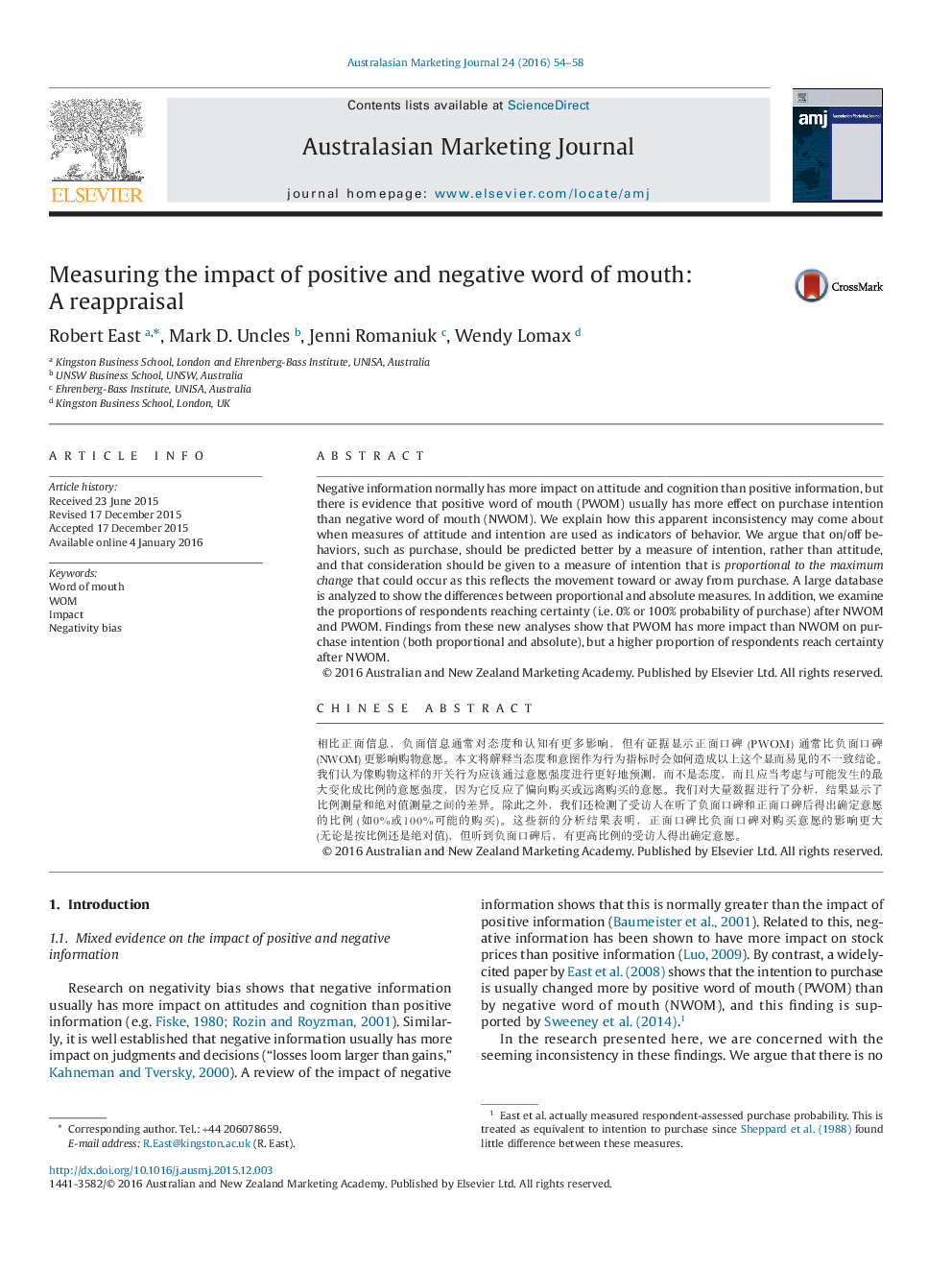| کد مقاله | کد نشریه | سال انتشار | مقاله انگلیسی | نسخه تمام متن |
|---|---|---|---|---|
| 1026870 | 942173 | 2016 | 5 صفحه PDF | دانلود رایگان |
• Does positive word of mouth have more impact than negative?
• We examine alternative measures of impact, using a large database.
• We argue that a proportional measure of intention is an good proxy when behaviour cannot be measured.
• But mixed results are found on the relative impact of positive and negative word of mouth.
Negative information normally has more impact on attitude and cognition than positive information, but there is evidence that positive word of mouth (PWOM) usually has more effect on purchase intention than negative word of mouth (NWOM). We explain how this apparent inconsistency may come about when measures of attitude and intention are used as indicators of behavior. We argue that on/off behaviors, such as purchase, should be predicted better by a measure of intention, rather than attitude, and that consideration should be given to a measure of intention that is proportional to the maximum change that could occur as this reflects the movement toward or away from purchase. A large database is analyzed to show the differences between proportional and absolute measures. In addition, we examine the proportions of respondents reaching certainty (i.e. 0% or 100% probability of purchase) after NWOM and PWOM. Findings from these new analyses show that PWOM has more impact than NWOM on purchase intention (both proportional and absolute), but a higher proportion of respondents reach certainty after NWOM.
Chinese Abstract相比正面信息,负面信息通常对态度和认知有更多影响,但有证据显示正面口碑 (PWOM) 通常比负面口碑 (NWOM) 更影响购物意愿。本文将解释当态度和意图作为行为指标时会如何造成以上这个显而易见的不一致结论。我们认为像购物这样的开关行为应该通过意愿强度进行更好地预测,而不是态度,而且应当考虑与可能发生的最大变化成比例的意愿强度,因为它反应了偏向购买或远离购买的意愿。我们对大量数据进行了分析,结果显示了比例测量和绝对值测量之间的差异。除此之外,我们还检测了受访人在听了负面口碑和正面口碑后得出确定意愿的比例 (如0%或100%可能的购买)。这些新的分析结果表明,正面口碑比负面口碑对购买意愿的影响更大 (无论是按比例还是绝对值),但听到负面口碑后,有更高比例的受访人得出确定意愿。
Journal: Australasian Marketing Journal (AMJ) - Volume 24, Issue 1, February 2016, Pages 54–58
